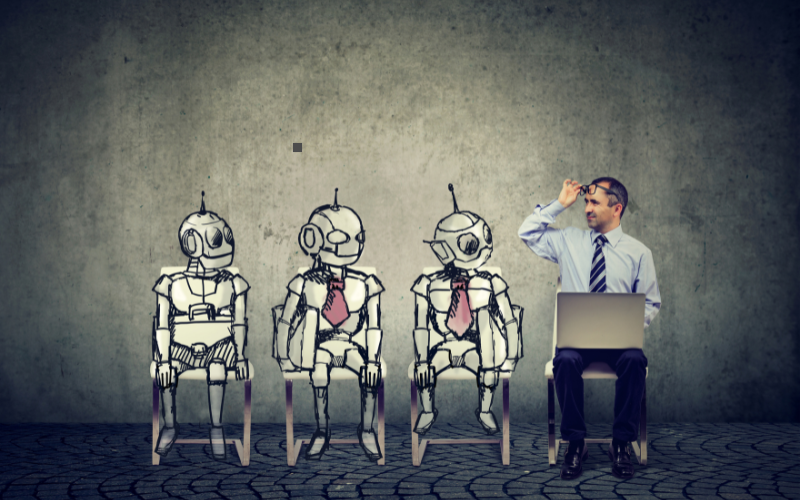Why AI can’t replace humans in L&D
Ever since ChatGPT debuted in October 2022, AI has been a buzzword in nearly every industry and learning & development (L&D) is no exception. But here’s the thing—while AI is a powerful tool that’s here to stay, it’s not about to replace us.
Let’s consider e-learning platforms: It was initially thought that e-learning might make traditional instructor-led training redundant. We very quickly realised that e-learning didn’t replace human-led training; it supplemented it. For L&D professionals, AI will be more like a trusted assistant rather than a replacement.
Cognitivism: Managing The Cognitive Load
Starting with cognitive load, the mental effort required to learn new stuff. Sweller’s Cognitive Load Theory, 1988, taught us that if you reduce unnecessary mental effort, learning becomes much more effective. Later in 1991, Sweller teamed up with Chandler, and their study proved that students performed 43% better on problem-solving tasks when information was presented in a clear, organised way that didn’t overload them.

So where will an experienced trainer outplay AI? AI can help by presenting information in a user-friendly way, but here’s where it falls short: creativity and adaptability. Humans have a natural ability to understand context —like knowing when to crack a joke or relate a tough concept to something currently trending. An experienced trainer knows when to lighten the mood or suggest a break, things AI just doesn’t get without some sort of nudge.
Social Learning Theory: The Power of Observation
If you are a familiar with education psychology, you may remember Bandura’s famous Bobo doll experiment from 1961? The study evidenced kids who saw an adult playing aggressively with the Bobo doll, were more likely to act the same way. This experiment is often cited as the founding of Social Learning Theory – learning through observation and social interaction.

Here’s the issue with Large Language Models (LLM’s): they mimic behaviours. They cannot replicate the depth of human interactions. Neither can humans emulate bots; we think in much more complex ways that go beyond mere mimicry. AI often misses human nuances because it lacks the deep cultural understanding and context-based reasoning that humans possess. L&D professionals play a crucial role in facilitating these observational learning opportunities, whether in-person or virtual.
Humanism: Prioritising the Learner
Humanism in education emphasises the learner and their interests. It has less to do with what is being taught and more about how you make the learner feel. Weimer’s research in 2013, produced incredible results – a 15% increase in student satisfaction, alongside a 10% increase in academic performance when a course adopts a learner-centred approach.
AI can personalise learning paths by adapting content based on an individual’s progress. AI does not offer the emotional depth, empathy, and cultural relevance that human educators bring. When curating courses, human educators think about what learners need to know, alongside how they’re going to feel about learning it. We anticipate challenges, provide encouragement, and create content that resonates on a relatable level. This holistic approach to education is something AI struggles to replicate.
Connectivism: Learning in a Networked World
In today’s digital world, learning happens through networks—this is the essence of Connectivism, a theory put forward by Siemens in 2005. A study by Downes, 2010, on MOOC’s [Massive Open Online Courses] found that learners who engaged with peers in online forums were 30% more likely to complete the course. AI can help provide access to these vast networks, but it’s the human element —mentors, peers, facilitators—that adds context, experience, and emotional support, making the learning experience richer and more meaningful.

The Human Element: Irreplaceable in Learning
Educational psychology is packed with evidence showing that human interactions are at the core of effective learning. Take Freeman’s 2014 study, which looked at active learning strategies in STEM education. Metadata from 225 studies compared traditional lectures with active learning. They analysed students’ engagement with the material through discussions and problem-solving—facilitated by human facilitators. The results? A 12% increase in exam scores and a 55% reduction in failure rates when active learning was used. The study highlights how essential human educators are in creating learning environments that encourage participation, critical thinking, and meaningful engagement.
Conclusion: Finding the Right Balance
So, where does this leave us? While AI is a powerful tool that can enhance and support the learning process, it can’t replace the rich, multifaceted interactions that define effective learning. The future of education isn’t about choosing between AI and human educators—it’s about finding the right balance, where AI complements and amplifies the irreplaceable value of human interaction in learning.
Get in touch with MDA Training today – our consultants are eager to provide a customised demo tailored to your training needs. Let’s explore how the perfect blend of AI and human interaction can elevate your learning experience to new heights.
Blog authored by: Robyn Coetzee, Training Consultant at MDA Training.



















